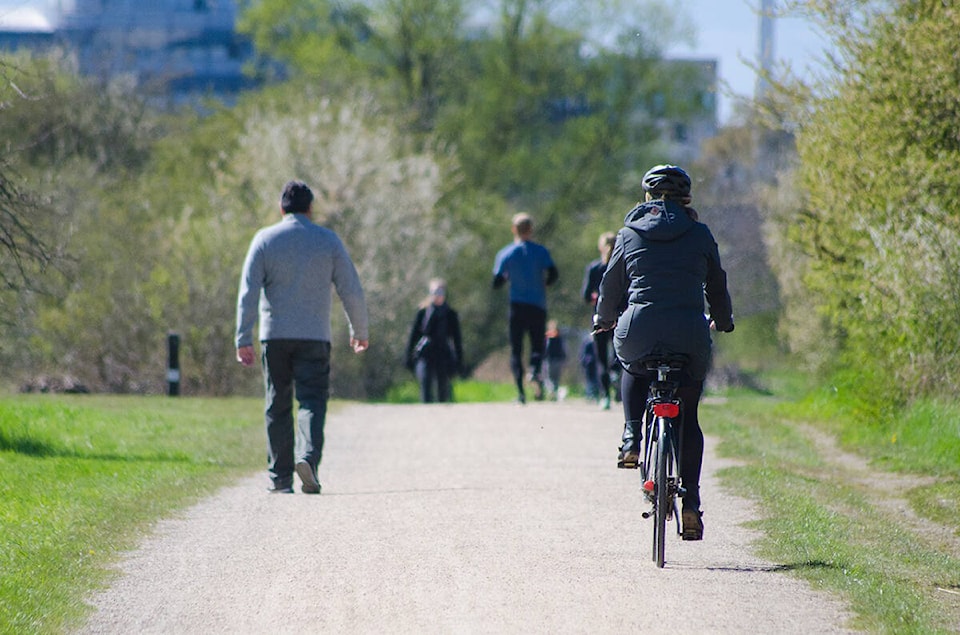Megan Tomlinson
Special to the Record
The COVID-19 pandemic catalyzed a ‘Bicycle Boom.’
At the time of writing, bicycle shops continue to face a shortage of supply due to increased demand and supply chain issues. Nonetheless, ridership is growing. The self-propelling pedal bike is a timeless, technological marvel with a significant role in humanity’s future. It is a cost-effective, carbon-free transportation modality whereby the rider is rewarded with an array of health benefits.
In Canada, the transportation sector is responsible for 20-25 per cent of greenhouse gas (GHG) emissions, with passenger vehicles accounting for roughly half. In British Columbia, the average distance travelled by car is 36 km per day, an equivalent of 3.8 tonnes of GHG per year. A simple way to reduce individual and collective GHG emissions is to change our transportation habits. Replacing short vehicle trips with active transportation is a viable intervention for climate change mitigation.
Active transportation is an umbrella term that includes cycling and walking. All levels of government are adopting active transportation strategies. There is sweeping recognition that the current system of moving people must be reimagined to meet the changing times. At a local level, the Comox Valley Regional District recently released the ‘Active Transportation Network Plan’ with the aim of linking our rural and municipal areas while increasing safety. The CVRD acknowledges advancement in active transportation is an investment in public health.
There is a direct relationship between transportation and personal health. Quite simply, physical inactivity contributes largely to disease burden. People who regularly engage in active transportation have a lower risk of dying prematurely from cardiovascular disease. Clearly, active transportation is a win-win for planetary and individual health. So, why are many of us still hesitant to take the heel-toe express to school or pedal our way to work?
Safety is the biggest barrier. Many roadways and thoroughfares were not built for cyclists or pedestrians. Potholes, road debris and automobiles are dangers cyclists navigate with great caution. Bike lanes and delineated bike routes are proven to be effective for decreasing injuries and deaths in high-risk areas; however, they are challenging to co-ordinate when spanning multiple jurisdictions.
Education is another key element to creating safe, active transportation routes. The Comox Valley Cycling Coalition is instrumental in providing bike safety education through programs such as Ride Right, designed for adult riders and the School Cycling program, aimed at building cycling skills in younger riders. Educating commuters on road safety extends to drivers as well. Last month, the Union of B.C. Municipalities adopted a resolution to support a Safe Passing Law in B.C., which would require drivers to maintain a minimum distance of 1 to 1.5 metres. While it has not yet been adopted by the provincial government, it is an example of the adaptations required to improve roadway safety.
Governments, health care professionals and climate scientists agree: increasing active transportation is a worthy initiative for improving health and mitigating climate change. The trend of saddling up on the self-propelled, two-wheeled transportation marvel will not be fading out of popularity because it is a low cost, practical solution for tackling the climate crisis while improving health outcomes.
Megan Tomlinson, R.N., is a member of the Comox Valley Nurses for Health & the Environment www.cvnhe.org
